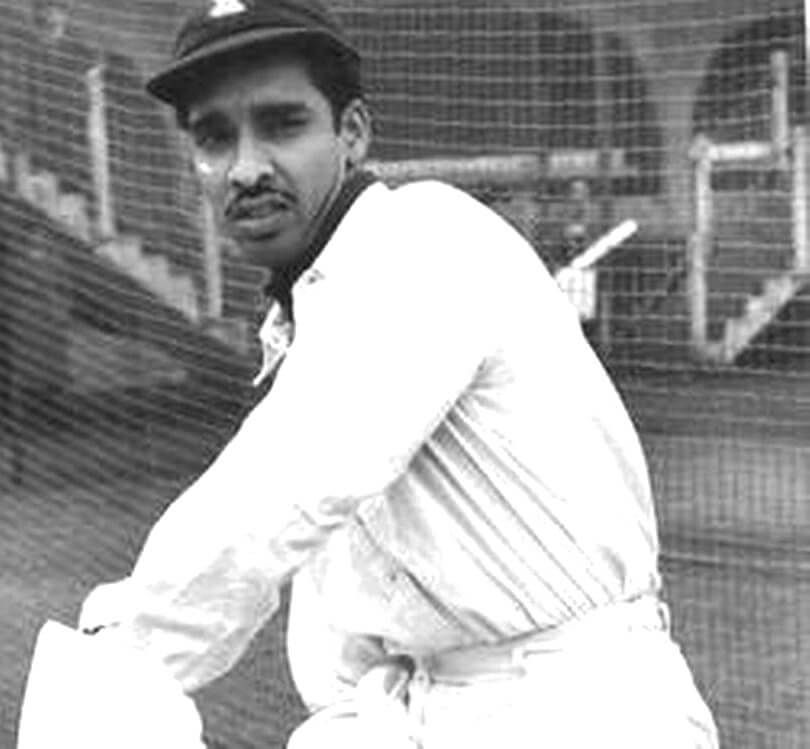Registered with the Registrar of Newspapers for India under R.N.I 53640/91
Vol. XXIX No. 23, March 16-31 2020
A Cultivated Stylist Who Played Pace and Spin with Equal Felicity
by Partab Ramchand

He is the second-oldest living Indian Test cricketer after Dattajirao Gaekwad of Baroda, who is 91. Coimbatore Doraikannu Gopinath, who turned 90 on March 1, played eight Tests between 1951-52 and 1959-60 with moderate success in a fragmented career; but he was the champion batsman for Madras in the fifties and early sixties. With a tally of 2,349 runs at an average of just over 51 with six hundreds and a highest score of 234 in the Ranji Trophy, he would be an automatic selection for an all-time Tamil Nadu XI as a middle order batsman.
Born in Madras, Gopinath made his first class debut in 1949-50 (he got a pair in his first Ranji Trophy game against Mysore) and in a comparatively short career that ended with the 1962-63 Season because of business interests, he scored 4,259 runs at an average of 42 with nine hundreds. But more than the impressive figures it was his elegant batsmanship that caught the eye. A cultivated stylist, Gopinath was an elegant right hander who charmed the ball away from the fielders. He played pace and spin with equal felicity and old timers recalled, with a glint in their eyes, his majestic 175 for South Zone against the New Zealanders on their 1955-56 visit.
Gopinath proved that he had talent, technique and temperament. The selectors showed infinite wisdom in rushing him onto the international stage. Within a year of his first class debut, he was playing for India in the fifth unofficial Test against the strong second Commonwealth team at Kanpur. He showed his class and skill straightaway, scoring an unbeaten 66 for a losing cause. Mushtaq Ali who shared a century partnership with him during the innings recalled in his autobiography, “So far, I had been a junior partner to Vijay Merchant but now I had to take full responsibility, not the least that of keeping Gopinath away from the bowling. But I need not have worried about the youngster. From the moment he came in, he batted with all the aplomb of a veteran. There was no trace of immaturity and nervousness of a newcomer at all. In 75 minutes we rattled up a hundred runs. Gopinath in his maiden Test appearance remained unbeaten with 66, a truly glorious performance. After I was out he seemed capable of getting the 77 runs which stood between victory and defeat.”
A year later, Gopinath made his Test debut against England at Bombay and performed commendably in two very different shades. In the first innings, he came in at 397 for six and remained unbeaten on 50 when Vijay Hazare declared the innings at 485 for nine. In the second innings, it was a very different role he had to play. 29 runs behind on the first innings, England hit back to take six wickets for 77 early on the final morning. It was during this ticklish situation that Gopinath entered. A seventh wicket fell at 88 and the crisis was severe. However, not at all overawed by the quick fall of wickets, Gopinath played in a calm manner. Batting with the assurance of a seasoned campaigner, he steered India out of troubled waters sharing an eighth wicket partnership of 71 runs with S.W Sohoni. By the time Gopinath was out for the top score of 42, India had virtually saved the match. In the final Test of the same series in his hometown, Gopinath proved his worth by scoring 35 and helping Polly Umrigar in a partnership of 93 runs for the seventh wicket, which went a long way in culminating in a historic triumph. It was Gopinath who took the final catch to dismiss Brian Statham off Vinoo Mankad that heralded India’s maiden Test victory.
Against this background, Gopinath’s final Test record of 242 runs at an average of 22 must be termed disappointing. He could not command a regular place in the crowded middle order though he toured England in 1952 and Pakistan in 1954-55. He played his last Test against Australia at Calcutta in 1959-60, scoring a stroke-filled 39 (top score) and a duck. Gopinath’s first class career started with a duck and his Test career ended with a duck; but what joys he provided in between! He was one of the main architects of Madras’ maiden Ranji Trophy triumph in 1954-55 and captained the state team for several seasons.
After his playing career came to an end, Gopinath kept in close touch with the game. He had nine straight terms from 1968-69 to 1976-77 on the selection committee, the last five of them as chairman. In 1979, he managed the Indian team to England. As an elder statesman, Gopinath has remained graciously affable and polished in his behaviour, while spending much time on the tennis courts and the golf course.

